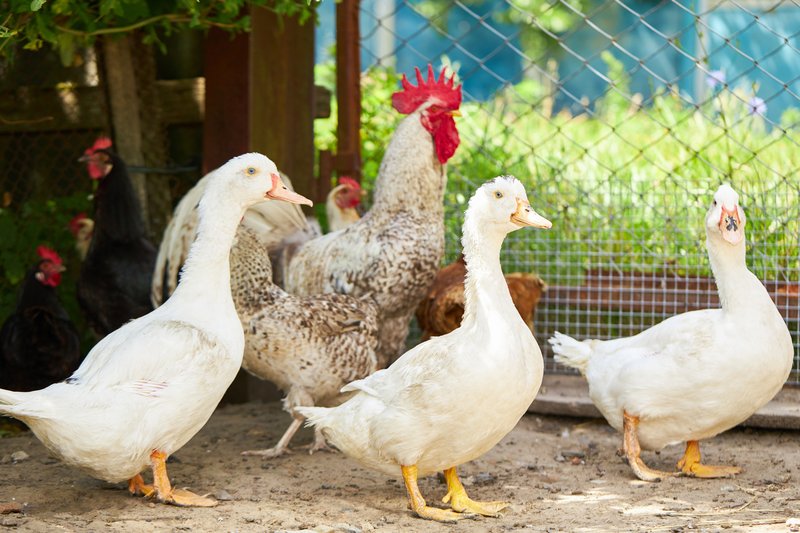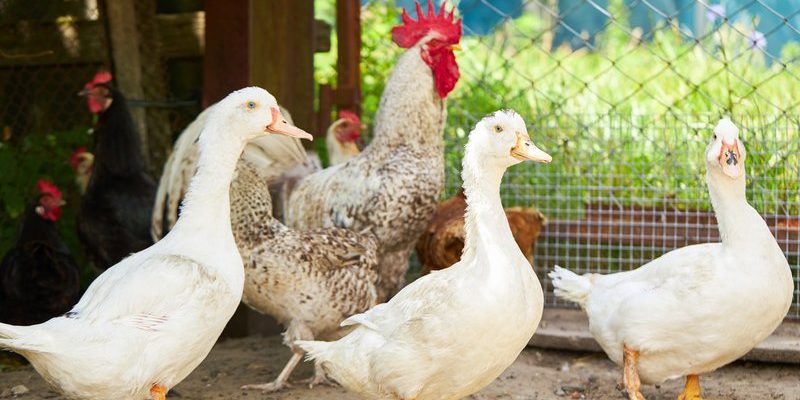
Imagine you’re at a dinner party, and you have a group of guests who all have very different tastes. Some like spicy food, others prefer sweet, and a few are just trying to figure out what’s on the menu that suits their palette. In the world of poultry, chickens, ducks, and other birds bring their own unique flavors and quirks to the flock dynamic. So, can these feathered friends share the same space without causing chaos? Let’s find out.
Understanding the Basics of Poultry Behavior
Before we jump into whether chickens can live with ducks or other poultry, it’s essential to understand a bit about their behavior. Chickens are generally social creatures, but they have their established pecking order. This means they can be quite territorial, especially when it comes to food and nesting areas. Ducks, on the other hand, tend to be more easygoing and can sometimes be a bit more chaotic.
Here’s the thing: chickens are ground foragers. They love scratching around in the dirt for bugs and seeds. Ducks, meanwhile, are dabblers and often prefer water. If you think of it like this: chickens are the focused students in a classroom while ducks are the playful kids running around at recess. Their different behaviors can clash if they don’t have enough space to do their own thing.
Given this, it’s crucial to consider the size of your yard or coop. Are there separate areas where each type of bird can thrive? If you have a good amount of space, it’s more likely they can coexist peacefully.
Physical Space Requirements
When planning to house chickens with ducks or other poultry, you need to consider how much space you have. Chickens typically require about 4 square feet of coop space per bird, while ducks need around 6 square feet. If you want harmony in your feathered community, it’s essential to ensure they have enough room to roam and explore.
A cooperative setup could look like this:
- Separate feeding areas to avoid competition for food.
- Designated bathing areas for ducks to keep them clean and happy.
- Safe zones where chickens can retreat if they feel threatened.
Providing ample space helps reduce stress and competition among your birds. Remember, a happy flock leads to less pecking and more harmony.
Feeding Differences: What Each Type Needs
Next up is food. Chickens and ducks have different dietary needs. Chickens thrive on a high-protein diet that includes grains, seeds, and commercial layer feeds. Ducks require a diet rich in carbohydrates, and they thrive on waterfowl pellets, grains, and greens.
You might be wondering how to handle feeding if you have both. Here are a few tips:
- Consider separate feeding stations for each type. This reduces the likelihood of any squabbles over food.
- Ensure ducks have access to fresh water at feeding time. They need water not just for drinking, but also for swishing their food around.
- Watch how they interact during mealtime. Sometimes, one type of bird can dominate and leave the other hungry.
By keeping their diets in check, you help maintain their health and lessen any tensions during feeding times.
Housing and Environmental Needs
Let’s talk about housing. Chickens and ducks both need secure shelters, but they have different preferences when it comes to bedding and coop features. Chickens like dry, clean areas, while ducks often prefer a bit of moisture. This can create some challenges!
Here’s what you can do to create a comfortable living space:
- Provide a dry area for chickens to rest and lay eggs. This can be in a separate section of the coop, away from where ducks hang out.
- Make sure ducks have access to a damp area where they can splash around. A kiddie pool can be an excellent solution!
- Ventilation is crucial. Ducks can get quite muddy, so ensure the coop has good airflow to prevent any build-up of dampness.
By understanding their housing needs, you can create a harmonious environment that caters to everyone.
Introducing New Birds to Each Other
If you’re considering introducing chickens to ducks (or vice versa), it’s important to do it carefully. Think of it like introducing a new friend to a tight-knit group. There’s often some initial tension, and it helps to facilitate a smooth introduction.
Here are some steps to follow:
1. Quarantine New Birds: Keep the newcomers in a separate area for a week or two. This helps prevent any potential illnesses from spreading.
2. Supervised Interactions: After the quarantine, allow brief, supervised introductions. Keep an eye on their behavior. You want to look for any signs of aggression or distress.
3. Gradually Increase Time Together: If things go smoothly, gradually increase the time they spend together, but keep their separate places available.
4. Watch for Signs of Stress: If one bird seems overly stressed, it might be a sign that they need more space or time apart.
By taking these steps, you can help ensure a peaceful coexistence.
Potential Conflicts: What to Look For
Even with careful planning, conflicts can arise. Chickens might peck at ducks if they feel threatened, or ducks might unintentionally chase chickens around, leading to stress.
Look out for:
- Signs of bullying, such as one bird chasing another away from food or nesting areas.
- Excessive noise or aggressive pecking, which can indicate stress within the flock.
- Health issues like feather loss, which could be a result of pecking or stress.
If you notice any problems, you may need to consider separating the birds or adjusting their living arrangements.
So, can chickens live with ducks or other poultry? The answer is yes, but it requires some careful planning and observation. By understanding their differences, providing separate spaces for feeding and rest, and facilitating gradual introductions, you can create a harmonious backyard haven.
Remember, every bird has its own personality, and some might be better suited for living together than others. Take the time to observe how they interact and be ready to make adjustments as needed.
With a little effort and love, your backyard can be a place where both chickens and ducks thrive together, creating a delightful mix of sounds and stories. Happy farming!

